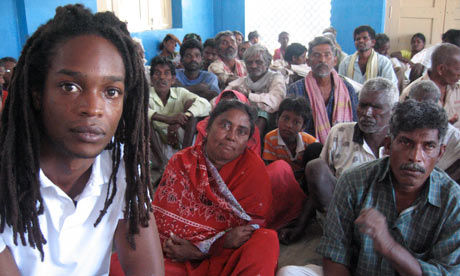
© Channel 4Seyi Rhodes in a leprosy colony.
Narsappa was just 10 years old when he was told he had leprosy, but the news changed the course of his life forever. People in his Indian village immediately began to shun him and told his parents that he had to leave. He says his mother started grieving for him "as if I was already dead". Shortly afterwards, his father took him to a hospital two hours away from home and left him there. No one ever came to visit him and Narsappa never went home again.
Now 42, he now lives in a leprosy colony on the outskirts of Hyderabad and campaigns on behalf of people affected by the disease. "I lie awake at night thinking about how I was treated and how I can stop others from going through the same thing," he says.
India may have one of the fastest growing economies in the world, but 130,000 Indians are diagnosed with leprosy every year - more than every other country put together. It's partly because the country's population is so huge but also, campaigners say, because the
Indian government and some international donors are neglecting the fight against the disease. Hundreds of thousands of Indians suffer from leprosy and its debilitating after-effects.
Given the number of new cases, it may come as some surprise that India announced it had eliminated leprosy in 2005. According to a target set by the World Health Organisation, countries can announce 'elimination' when there are fewer than one case for every 10,000 people. Since then, the government has channeled funding previously dedicated to leprosy back into the general health system. Leprosy charities say that donations have also fallen significantly and some projects have had to close.


